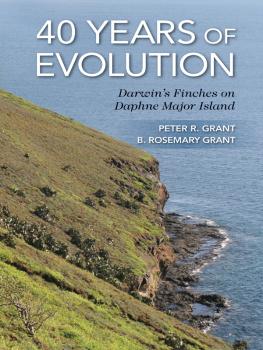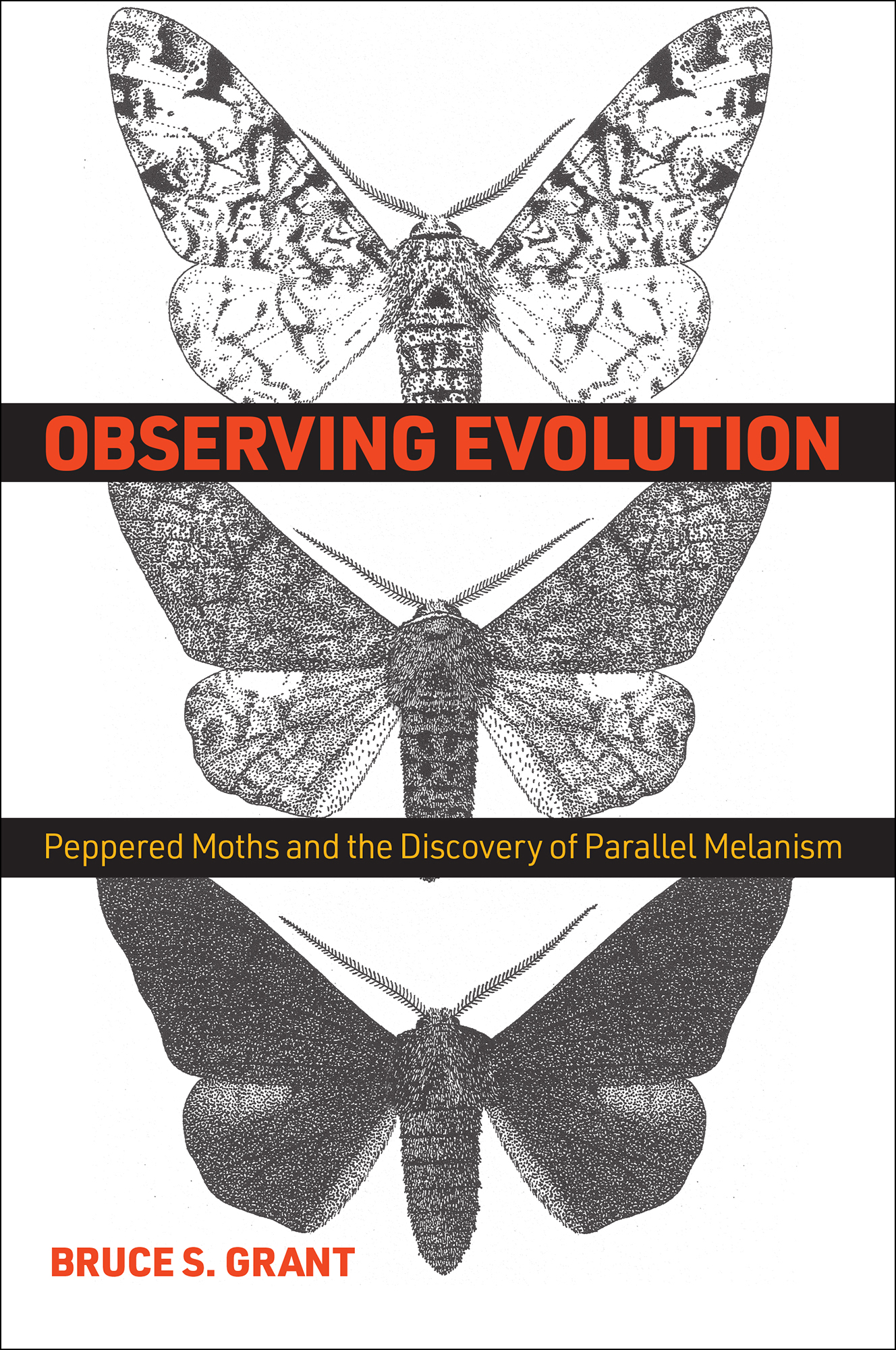Bruce S. Grant - Observing Evolution: Peppered Moths and the Discovery of Parallel Melanism
Here you can read online Bruce S. Grant - Observing Evolution: Peppered Moths and the Discovery of Parallel Melanism full text of the book (entire story) in english for free. Download pdf and epub, get meaning, cover and reviews about this ebook. year: 2021, publisher: Johns Hopkins University Press, genre: Detective and thriller. Description of the work, (preface) as well as reviews are available. Best literature library LitArk.com created for fans of good reading and offers a wide selection of genres:
Romance novel
Science fiction
Adventure
Detective
Science
History
Home and family
Prose
Art
Politics
Computer
Non-fiction
Religion
Business
Children
Humor
Choose a favorite category and find really read worthwhile books. Enjoy immersion in the world of imagination, feel the emotions of the characters or learn something new for yourself, make an fascinating discovery.

- Book:Observing Evolution: Peppered Moths and the Discovery of Parallel Melanism
- Author:
- Publisher:Johns Hopkins University Press
- Genre:
- Year:2021
- Rating:4 / 5
- Favourites:Add to favourites
- Your mark:
Observing Evolution: Peppered Moths and the Discovery of Parallel Melanism: summary, description and annotation
We offer to read an annotation, description, summary or preface (depends on what the author of the book "Observing Evolution: Peppered Moths and the Discovery of Parallel Melanism" wrote himself). If you haven't found the necessary information about the book — write in the comments, we will try to find it.
A firsthand account of how a modest moth demonstrated Darwins theory of natural selection.
The extraordinary tale of the humble peppered moth is at the very foundation of our acceptance of Darwinian evolution. When scientists in the early twentieth century discovered that a British population of the small, speckled Biston betularia had become black over the course of mere decades in response to the Industrial Revolutions encroaching soot, the revelation cemented Darwins theory of natural selection. This finding was the staple example of evolution in action until the turn of the millennium, when proponents of Creationism fomented doubts about the legitimacy of early experiments. In the midst of this upheaval, evolutionary biologist Bruce S. Grant and his contemporaries were determinedly building a dataset that would ultimately vindicate the theory of industrial melanism in the peppered moth and, by extension, the theory of natural selection itself. Observing Evolution tells the remarkable story of this work.
Shining a light on the efforts of scientists who tested Darwins trailblazing theory, Grant chronicles the historical foundations of peppered moth research, then explains how he and his collaborators were able to push this famous study forward. He describes how his experiments were designed and conducted while painting a vivid picture of the personalities, events, and adventures around the world that shaped his successesand struggles. His story culminates with his discovery of the mirrored rise and fall of melanism in peppered moth populations separated by the vastness of the Atlantic Ocean, which settled the intense controversy around evolution by documenting natures recurring experiment.
Observing Evolution is a crash course in natural selection and the history of evolutionary biology for anyone interested in Darwins legacy. Its also a fascinating read for lepidopterists and scientists about the bridge between classic experiments and todays sophisticated DNA sequencing, which reveals in ever greater detail how the lives of these tiny organisms have such enormous implications.
Bruce S. Grant: author's other books
Who wrote Observing Evolution: Peppered Moths and the Discovery of Parallel Melanism? Find out the surname, the name of the author of the book and a list of all author's works by series.








